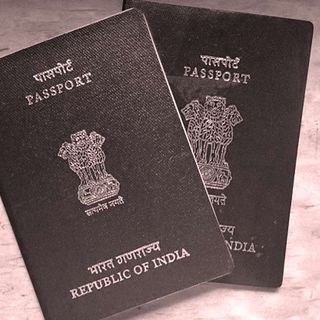
Expert Poll: India Is World’s Most Dangerous Country for Women
It’s a flawed survey, but it draws attention to real issues.

A survey released today by Thomson Reuters Foundation has India topping the list of the world’s worst places for women to live.
The survey polled 548 experts in the fields of humanitarian aid, academia, healthcare, non-government organisations, policy, development and social commentary who specialize in women’s issues. These experts were sourced in equal number from the following regions: Europe, Africa, the Americas, South East Asia, South Asia and the Pacific. The experts, who either completed an online survey or were interviewed by phone or in person, are unnamed.
The survey asked experts to name the five countries, out of the 193 UN member states, most dangerous to live in as a woman. Experts were then asked to name the single worst country for women in each of six categories: healthcare, discrimination, cultural traditions, sexual violence, non-sexual violence, and human trafficking. Combining these rankings, India emerged as the most dangerous country in the world for women.
More specifically, India topped three of the categories: damaging cultural traditions, sexual violence and human trafficking. India also made it into the top five within the remaining categories, ranking third-worst in non-sexual violence against women, third-worst in discrimination, and fourth-worst (tied with Yemen) in healthcare. Other countries regularly appearing the top five worst places for women across those six categories include Afghanistan, Syria, Somalia, Saudi Arabia, and Pakistan. The only developed country to appear in any of the worst-lists was the US; experts ranked the country third-worst in the world in sexual violence, and sixth-worst in the world for non-sexual violence against women.
This sounds bad, and it may, in fact, be so — but this survey, unfortunately, doesn’t prove it. The lack of transparency around who these experts are, where they’re from (aid workers are often foreigners working abroad, which does not make them un-expert but surely colors their perceptions), and how they define “worst” means, above all, this survey proves that India has a PR problem.
The fact that the US is the only developed country to appear on the list speaks to confounding analyses. “Experts said the surprise addition of the United States in the top 10 most dangerous countries for women came down to the #MeToo and Time’s Up campaigns against sexual harassment and violence that have dominated headlines for months,” explained the press release surrounding the survey.
It is confusing how a movement intended to provide women a platform and voice to speak against sexual harassment and assault is evidence of heightened prevalence of sexual violence relative to anywhere else. The US may very well have a sexual violence problem, but if it does, #MeToo headlines don’t prove the problem is worse there than it is in other countries — only that it is more visible. Similarly, the data the press release cites in support of India’s ranking as the worst country in terms of sexual violence doesn’t support a comparative evaluation of prevalence, merely more headlines: “Government data shows reported cases of crime against women rose by 83 percent between 2007 and 2016, when there were four cases of rape reported every hour.” The report ignores the fact that these heightened statistics likely reflect not increased crime against women, but increased reporting by women — which could be interpreted as a metric of empowerment.
Finally, India tops the list of human trafficking countries, and it’s not a stretch to understand why — it is both a common source country and a common destination country for trafficked people, a group that includes forced or bonded labor, domestic servitude, forced marriage and sexual slavery.
“Trafficking is a global issue, but of all the victims I have seen, I have found those from southeast Asia, mainly India, the most vulnerable,” Triveni Acharya, of the Indian anti-trafficking charity Rescue Foundation, told Thomson Reuters Foundation in an article related to the survey findings. It is unclear if Acharya is one of the experts whose opinion is included in the survey. “Girls continue to be seen as a burden on parents, inferior to boys.”
The rest of the list includes many known origin countries — Russia, Nigeria, the Philippines, Myanmar, or countries that are, like India, both a source of and destination for trafficked people (Pakistan, Thailand). Notable in their absence from the worst-list are more developed regions like North America, Western and Southern Europe, and the Middle East — regions known to be destinations for transnational trafficking. Which begs the question: Is a country worse if it supplies trafficked women, demands them, or both? Again, the lack of a consistent evaluative metric muddies the waters.
There’s no denying India has many problems in the way it thinks about and treats its women. Unfortunately, the survey relies on amorphous expressions of sentiment about the state of women’s issues, which, by the experts’ own admissions, seem to have been largely influenced by global media coverage, rather than hard data or comparative analysis. And so, the study presents Indian policymakers with only one reliable fact: That according to people who study and work for the betterment of women across the world, there is a strong perception that India is failing half of its citizens. And despite our issues with the methodology of the survey, that finding should not be ignored.
Liesl Goecker is The Swaddle's managing editor.
Related


Kerala HC Rubbishes Moral Outrage Over Magazine’s Breastfeeding Cover
